Corpus of the Inscriptions of Campā
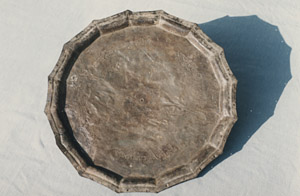
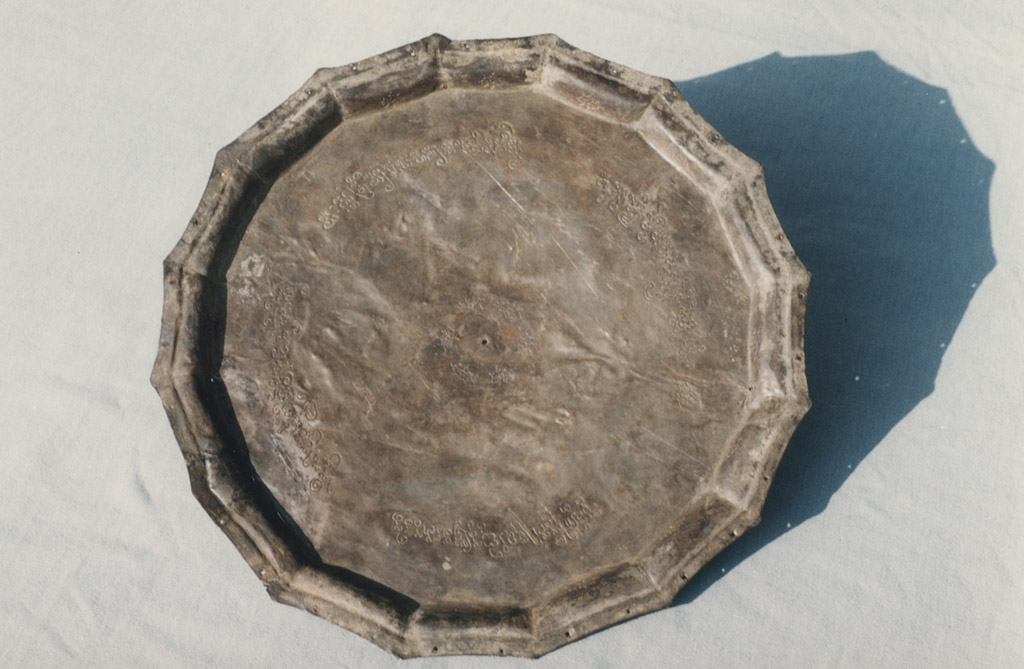
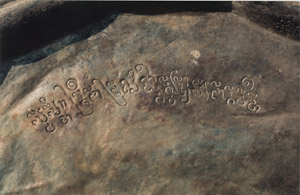


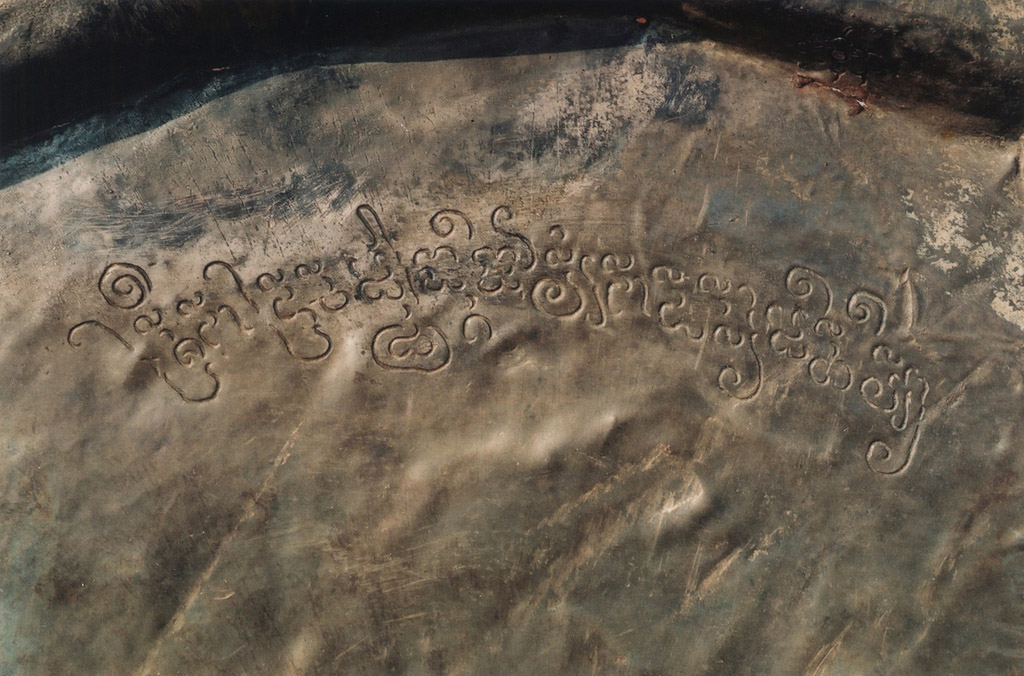
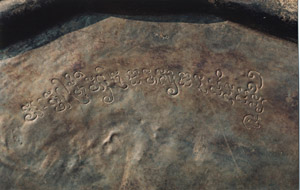
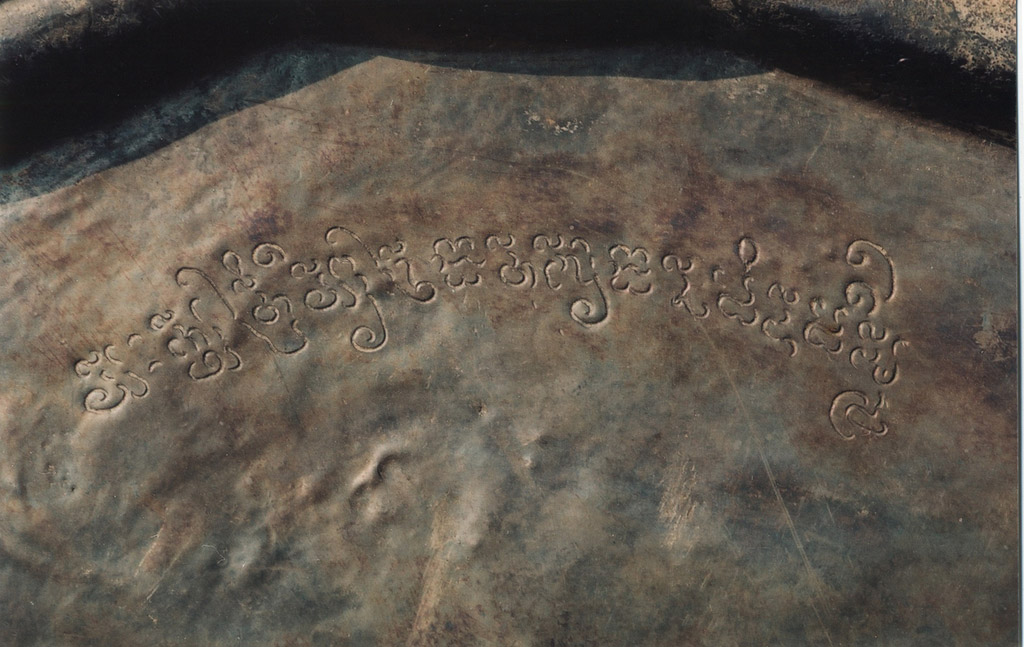
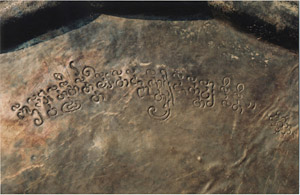

C. 207 Platter (bhājana)
Please note: you are reviewing a preprint version of this publication. Contents here may change significantly in future versions. Scholars with specific interests are urged to consult all cited bibliography before using our texts and translations or drawing other significant conclusions.
Support Platter; silver; reportedly (Schweyer 1999: 349) d. 2.5 cm, diameter 42.
Text Four segments engraved consecutively along the perimeter of a platter, forming one line written in Sanskrit.
Date 9th or early 10th century CE.1
Origin District of Đại Lộc (Quảng Nam).
The platter was part of the private collection of Mr. Vũ Kim Lộc in Hồ Chí Minh City at least until 1999, when Anne-Valérie Schweyer published a study of this inscription along with those inscribed on two other objects in the same collection (C. 205 and C. 206; see also C. 208 and C. 209). It was no longer held by Mr. Vũ Kim Lộc when we visited him in 2009. He informed us that the artefact had been donated to the Museum of Ethnology at Hà Nội, but we were unable to trace it there (see ECIC III: 475).
Edition(s) First edited, with French translation, in Schweyer 1999: 350;2 whence, with English translation, in Golzio 2004: 120. Some emendations proposed in ECIC III: 479 n. 95.
The following text was edited by Arlo Griffiths.
2 yaṁ ◇ yaḥ Schweyer. There is clearly no visarga here but rather an anusvāra. Contrast yaḥ as the beginning of the third segment of text. — bhaṭanāma° ◇ bhadranāma° Schweyer. — 4 bhṛsvātma° ◇ Schweyer's attempt to justify this reading is not convincing. The scribe must have made a small mistake, spelling bhṛ° instead of bhū° (the two akṣaras resemble each other strongly). Cf. notably C. 66, face A, st. XI and C. 145 diśakīrttaye, which expressed the same meaning as bhūsvātmakīrttaye. — || ((fleuron)) ◇ The punctuation is not represented by Schweyer.
Translations
English
Hail! This son of Śrī Bhadravarman, by the name of Bhaṭa, who is a kṣatriya, has given this silver platter to the venerable Śrī Bhadraliṅgeśvara here, through devotion to him, for the sake of his own fame in the world.
French
Salut! Ce fils de Śrī Bhadravarman, au nom de Bhaṭa, qui est un kṣatriya, a donné ce plat en argent à ce vénérable Śrī Bhadraliṅgeśvara-ci, par dévotion à ce dernier, en vue de sa propre gloire dans le monde.
Notes
- There are no strong arguments to suppport the assumption that the Bhadravarman mentioned in the inscription can only be identified as the “troisième roi de la dynastie d'Indrapura” (Schweyer 1999: 350).
- Although she admits that she cannot identify the verse form, Schweyer wrongly assumes the text to be metrical. Her impression that the text presents “un ensemble de 4 fois 14 syllabes” (Schweyer 1999: 349 n. 21) rests on the assumption that the invocation svasti would, in a totally unprecedented fashion, form part of the metrical text.


